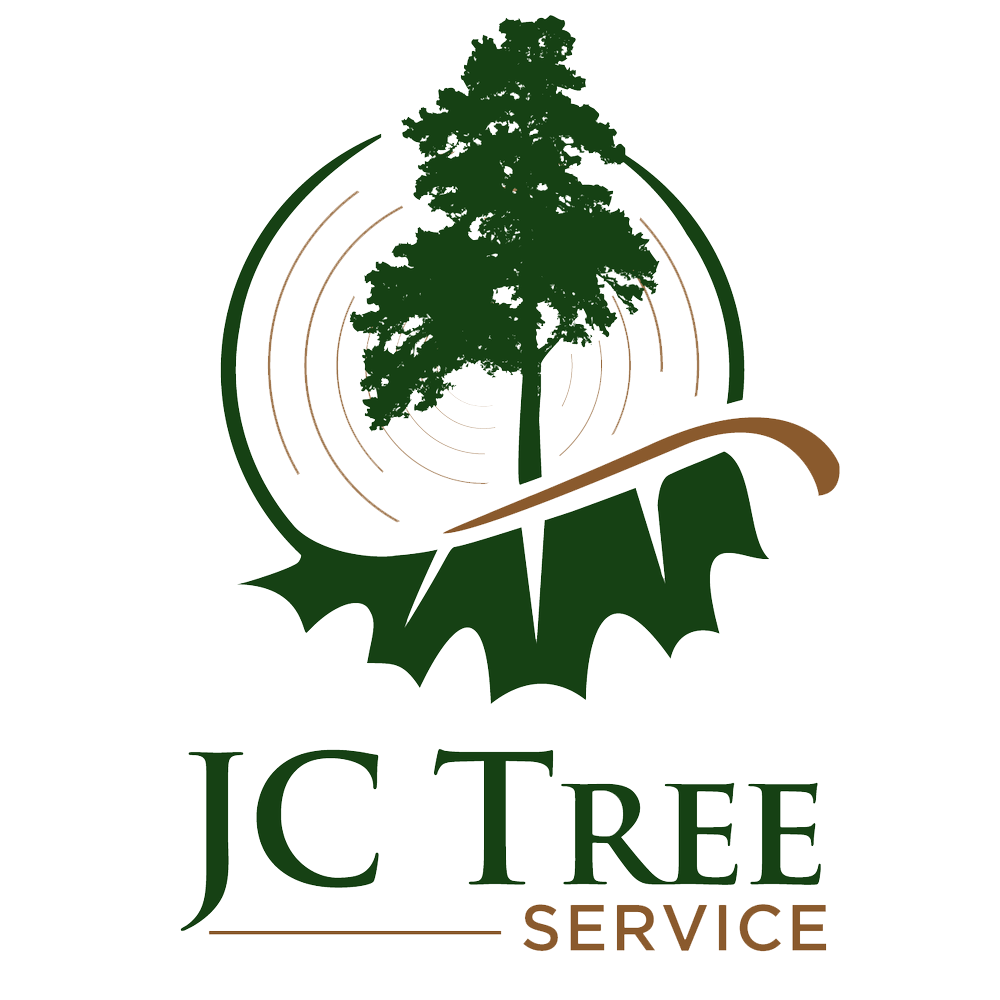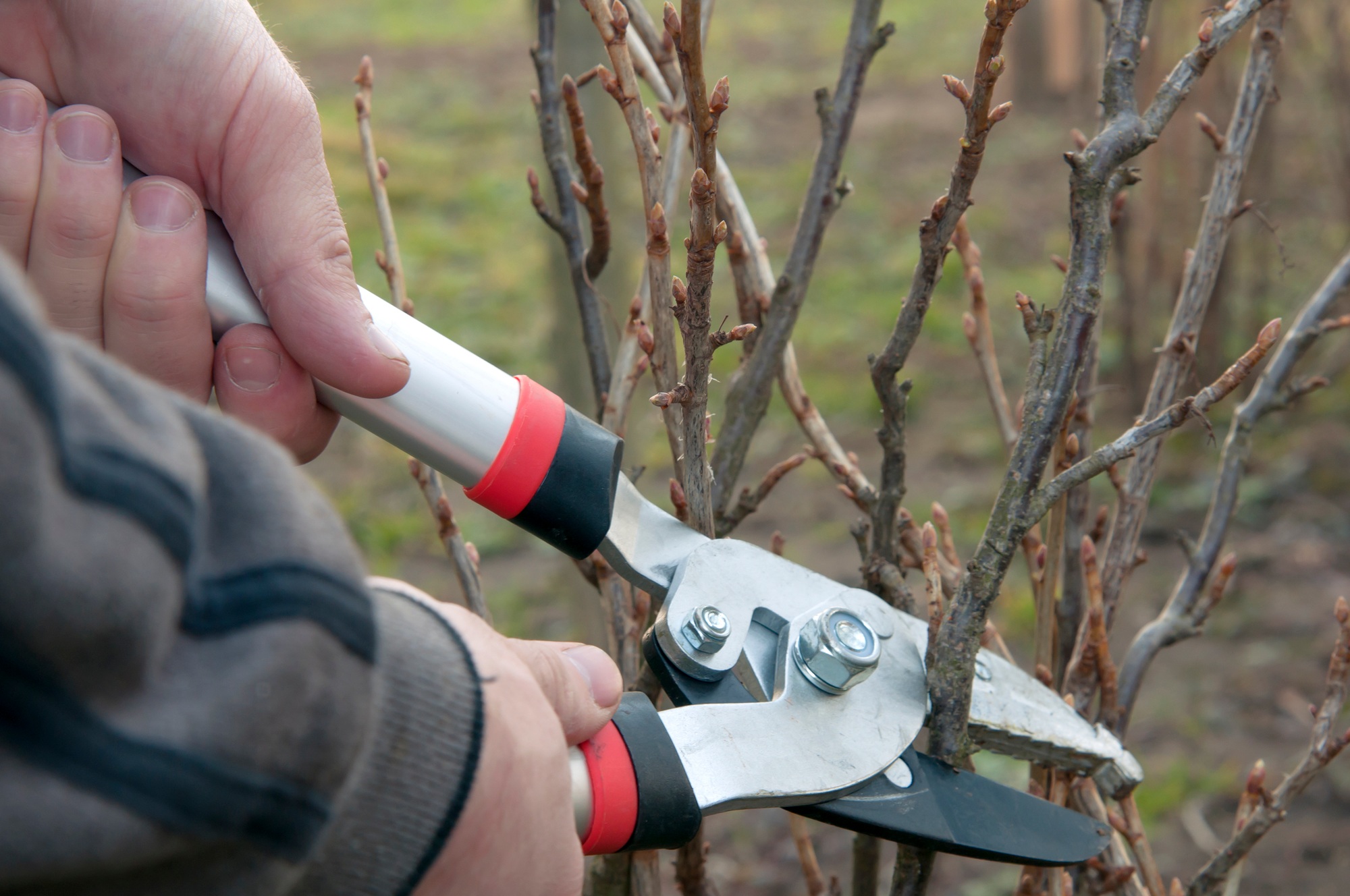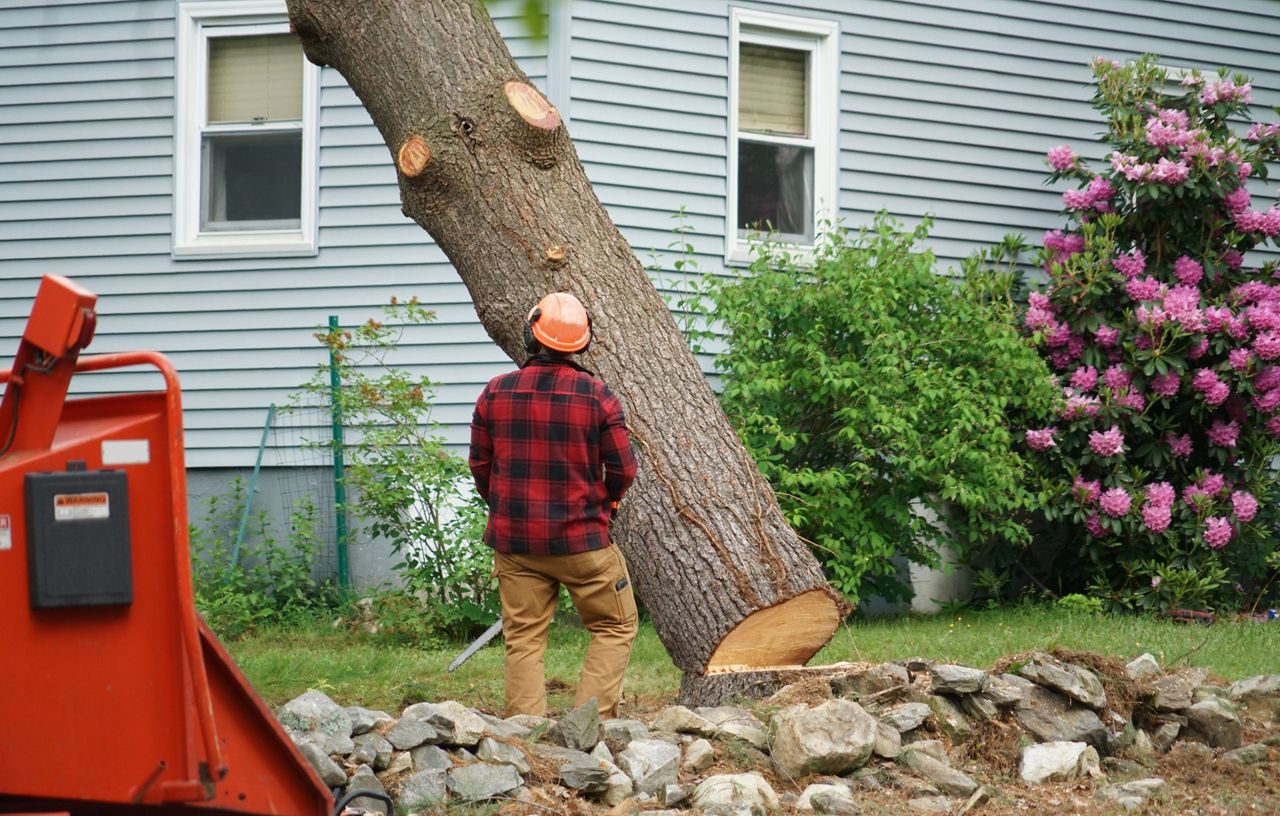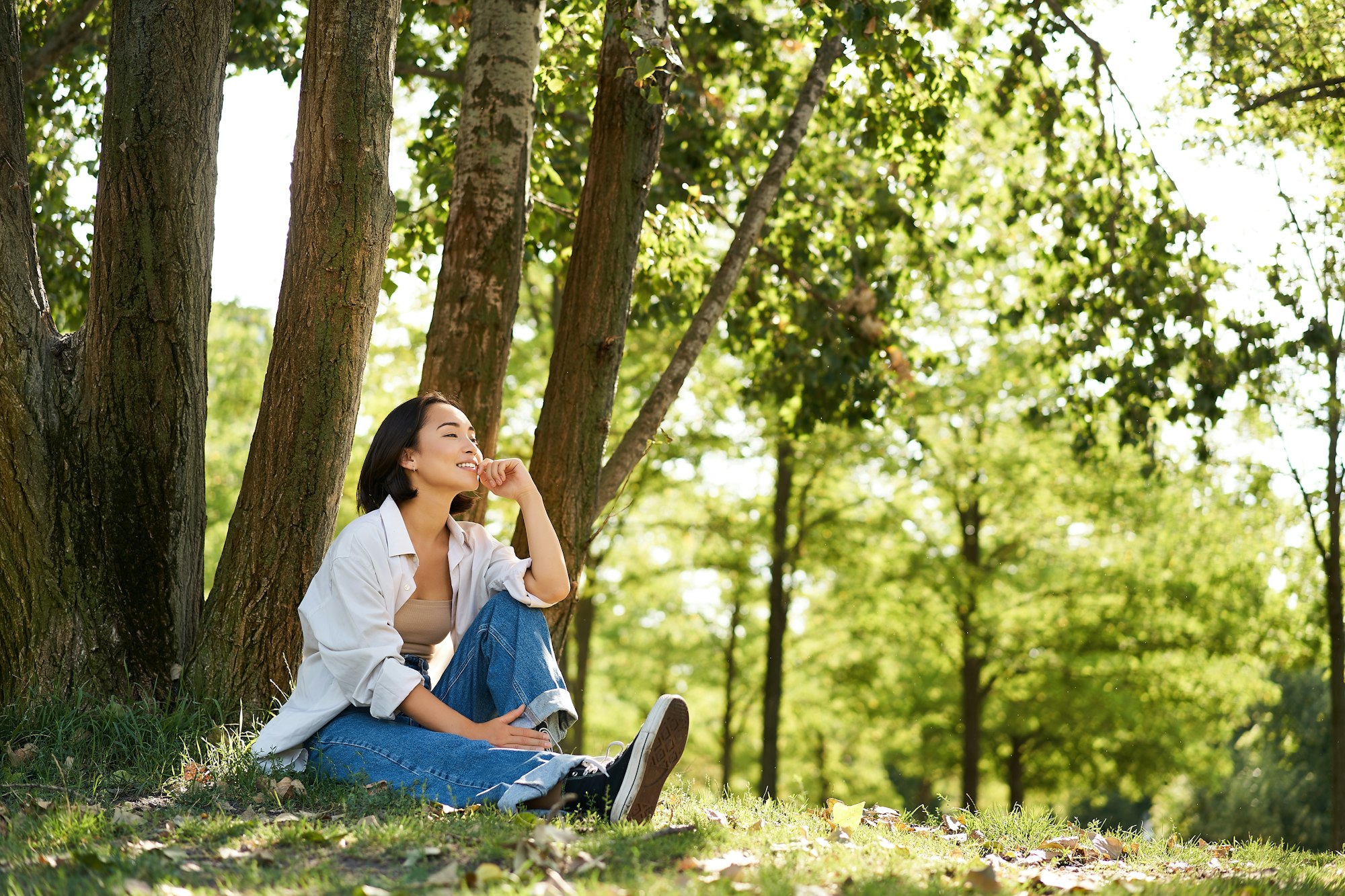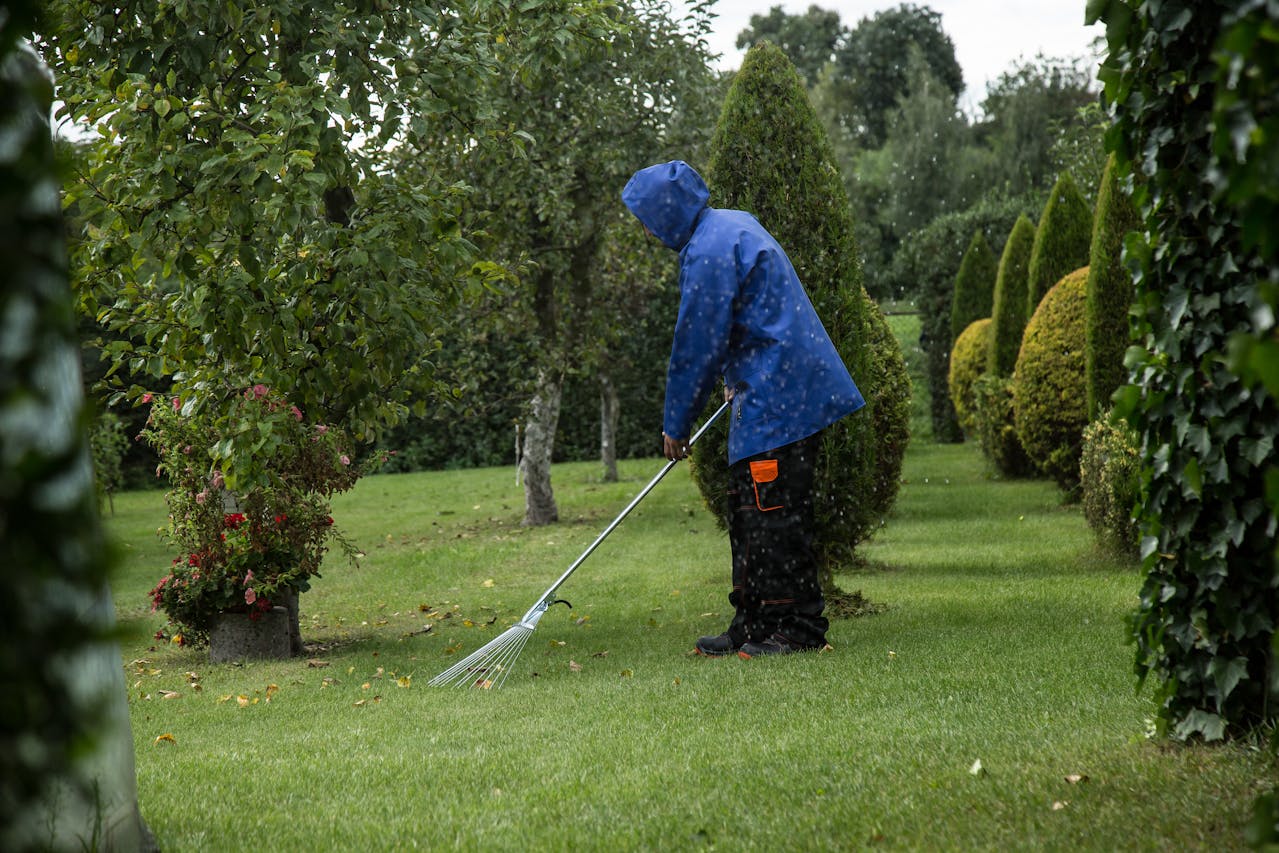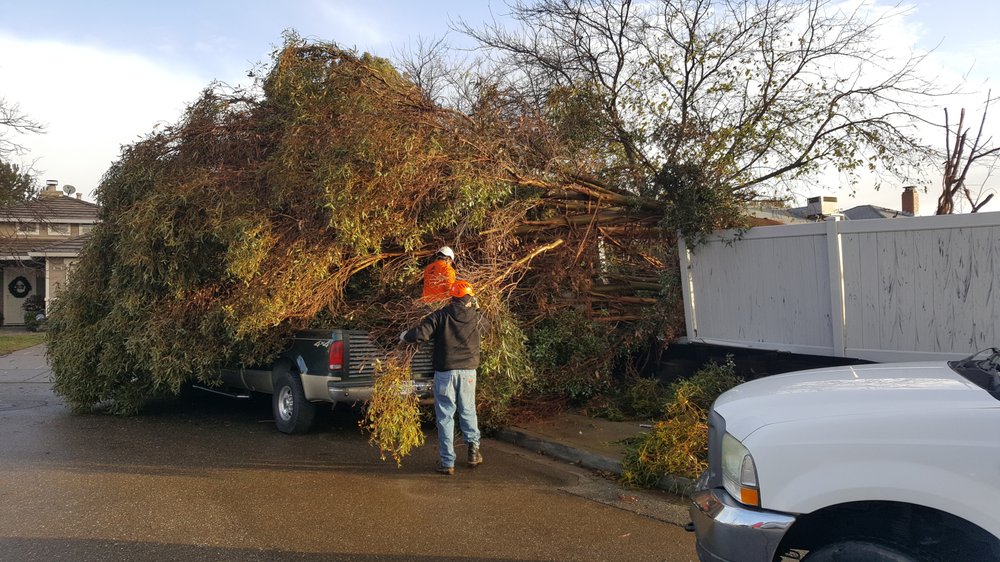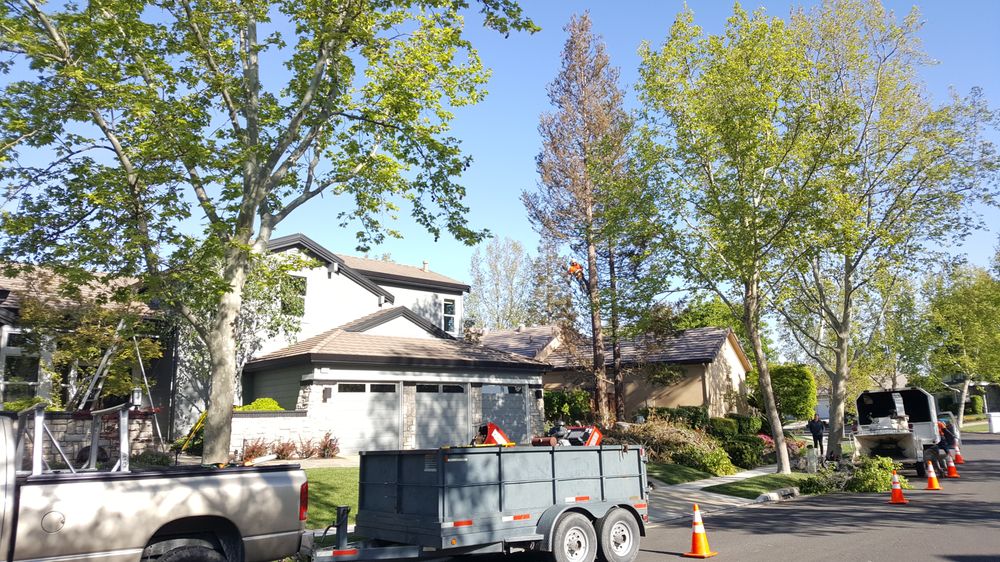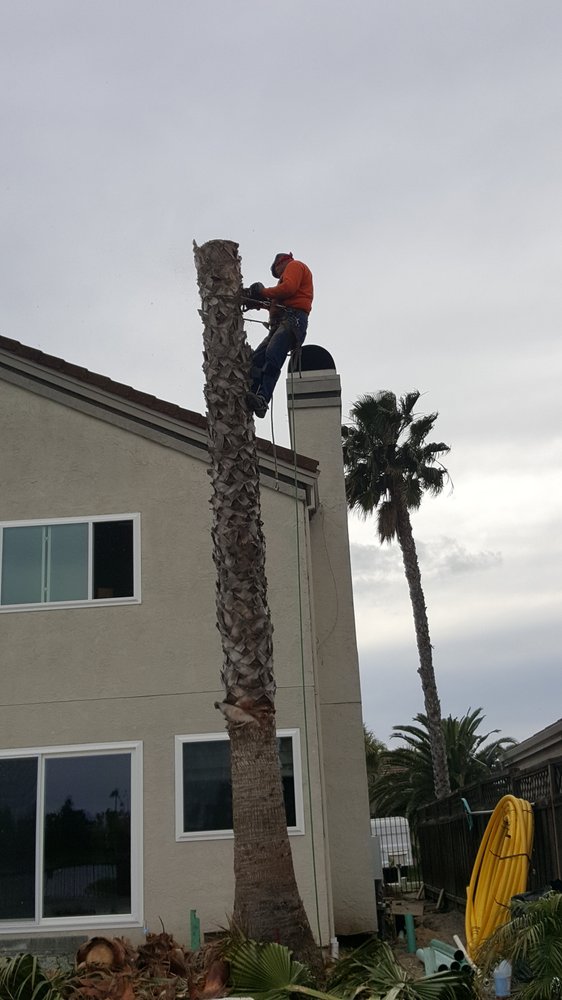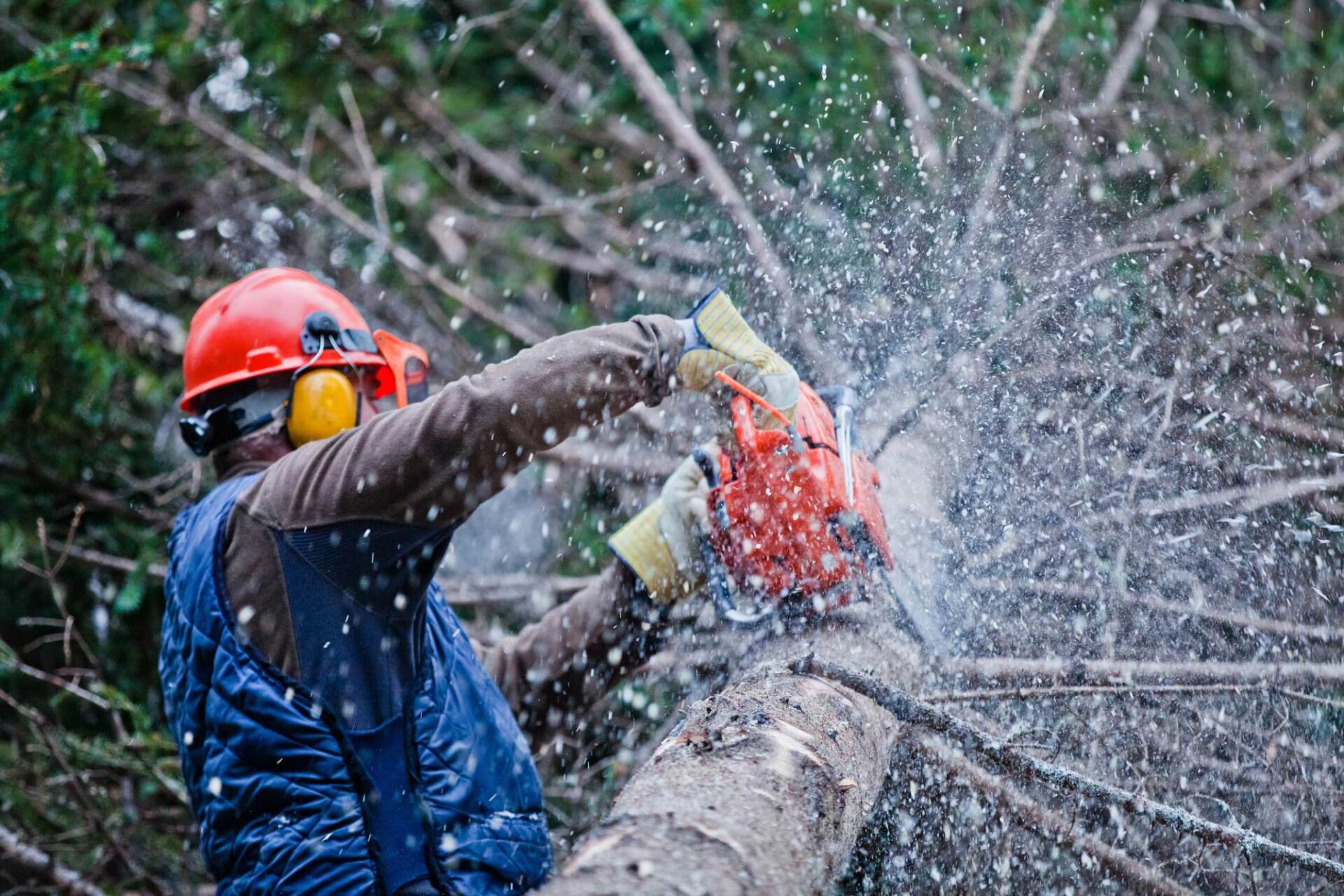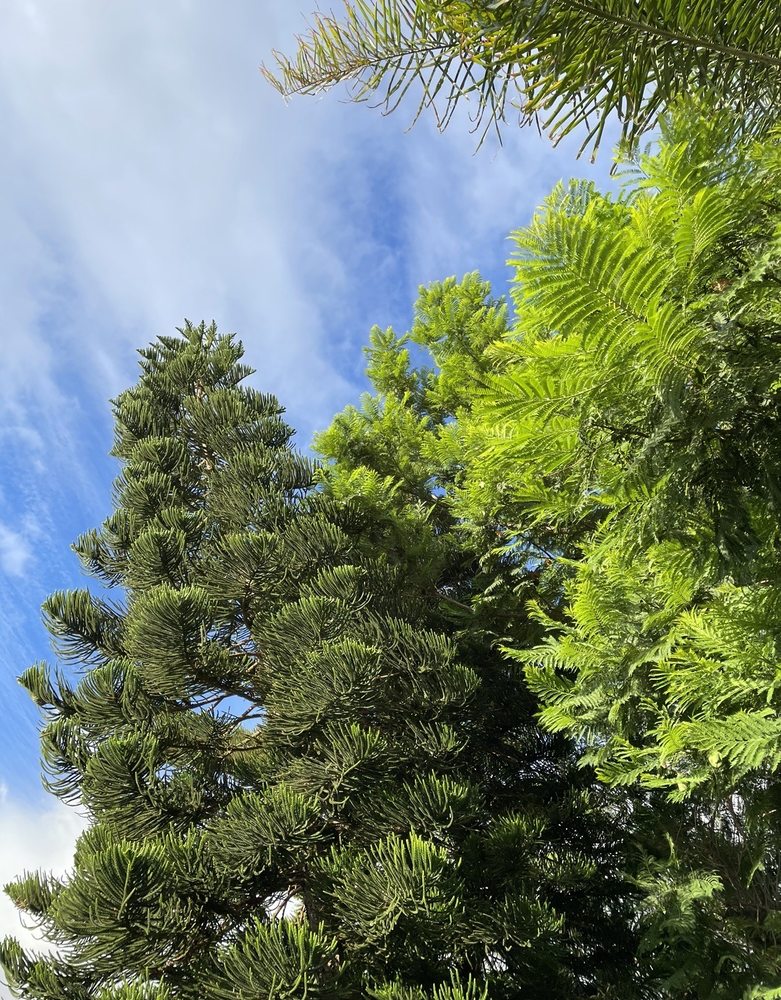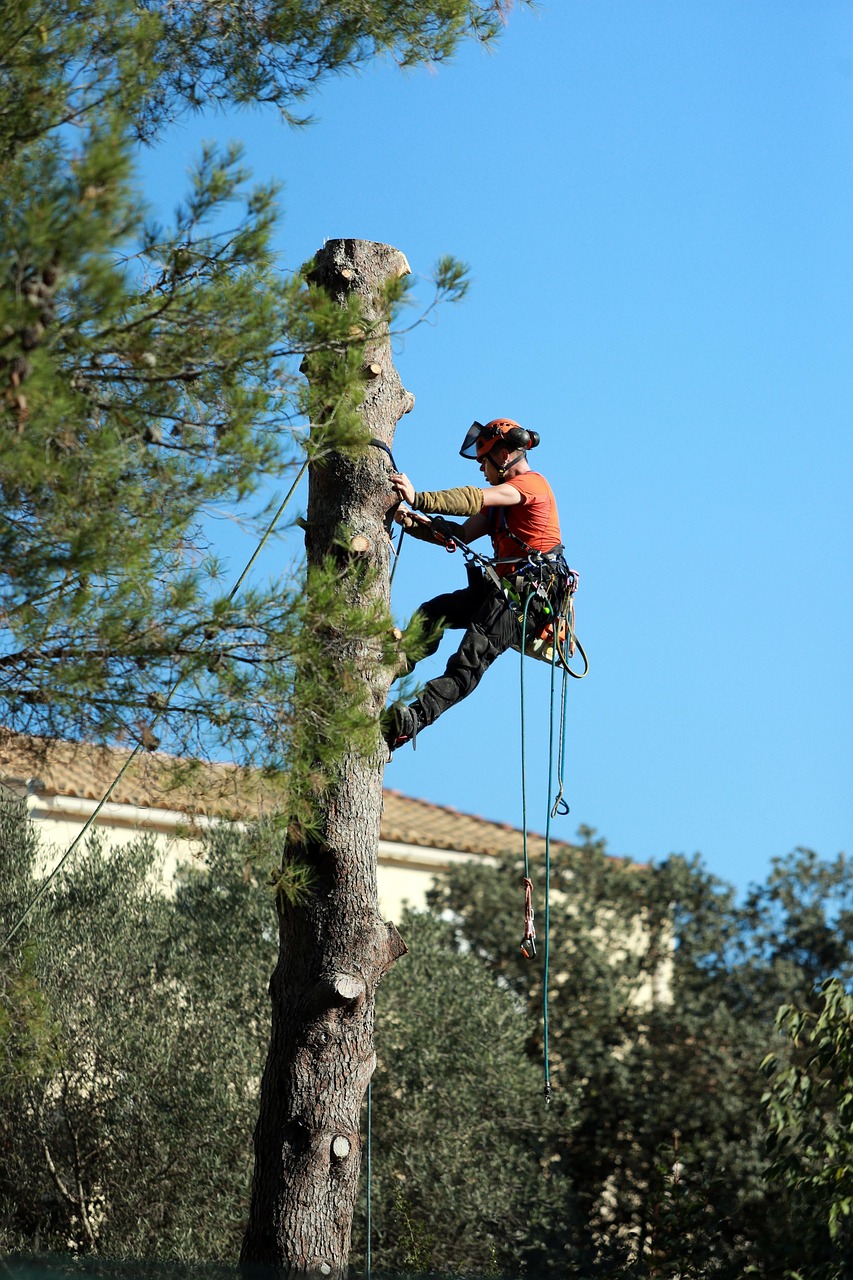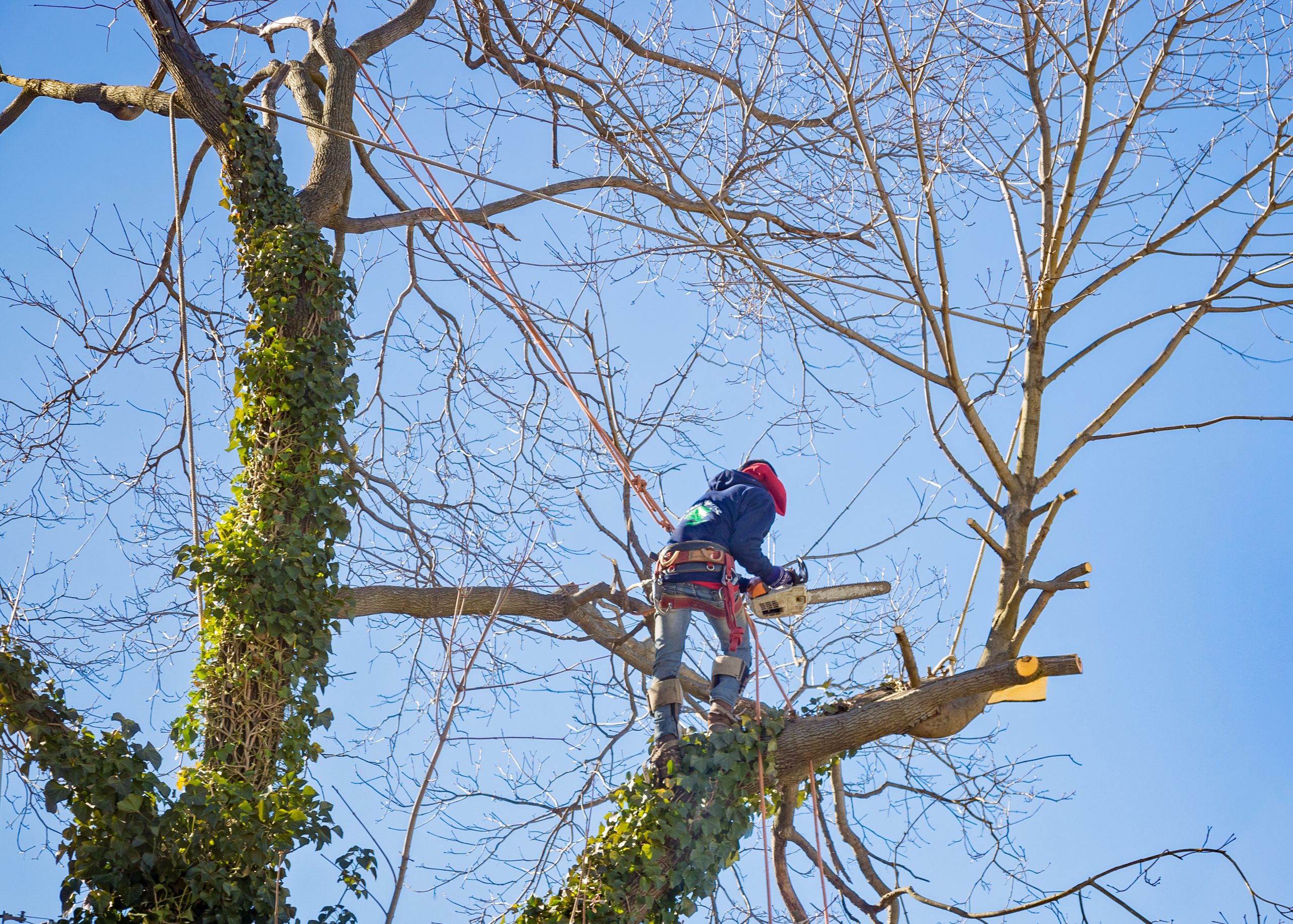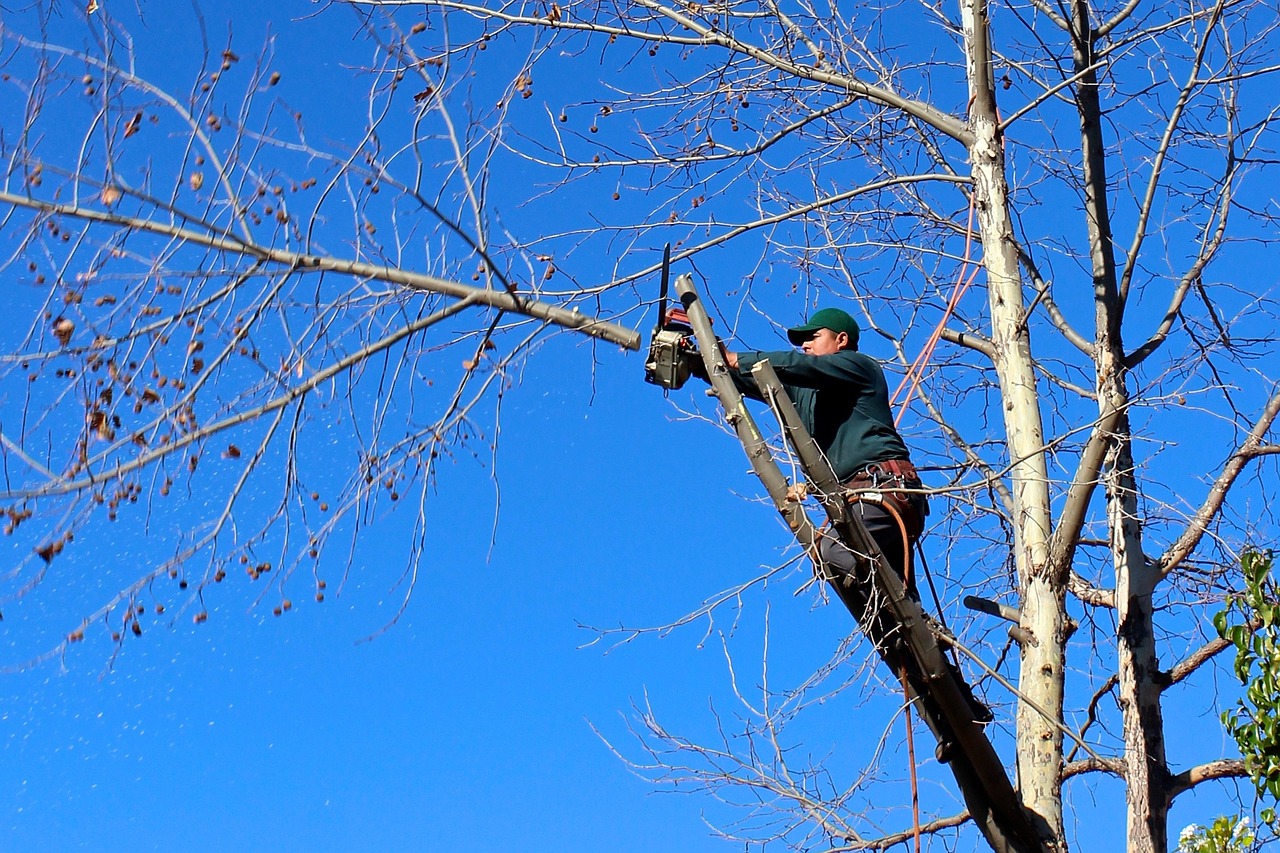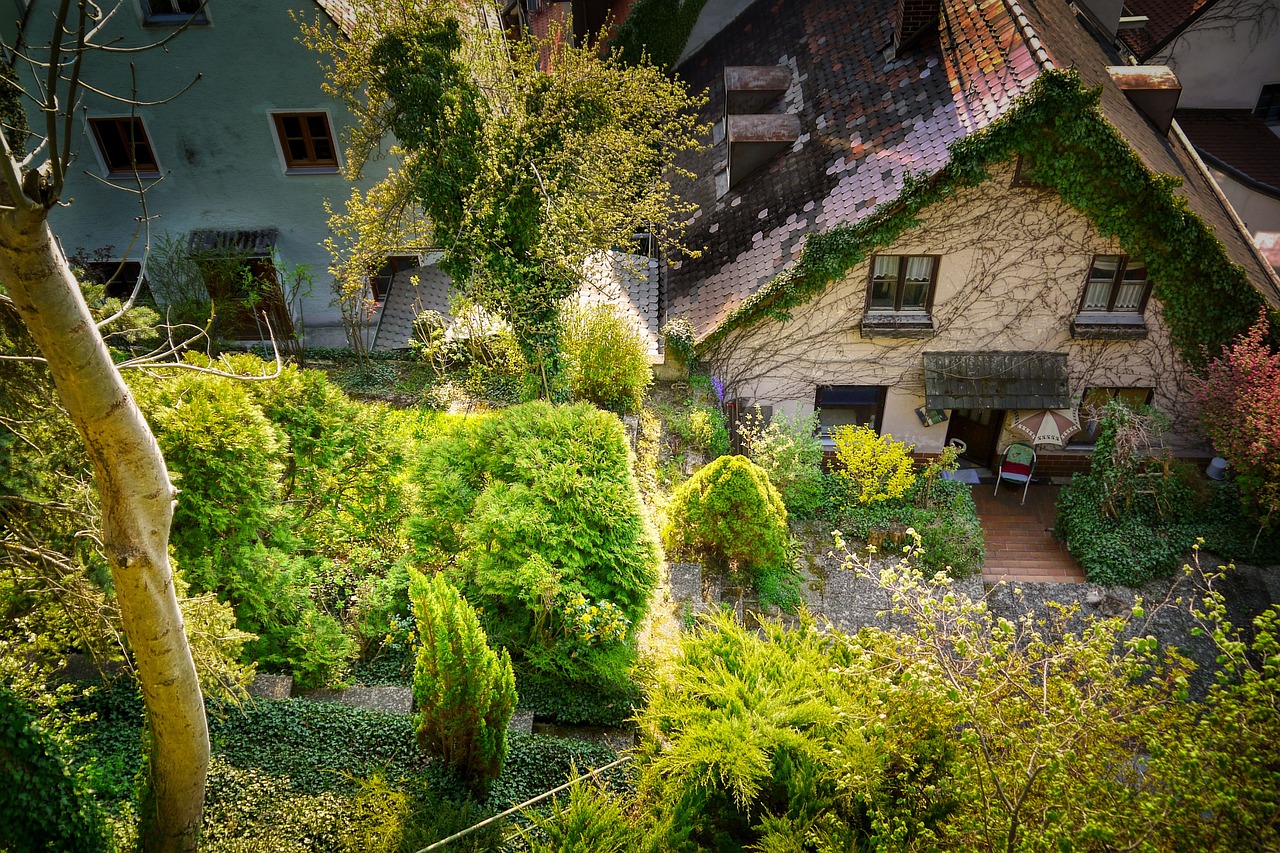Key Takeaways
- Generally, the sooner you can detect a tree disease, the better. Routine inspection of trees for signs such as yellowing leaves, dead limbs, or mushrooms should help catch diseases early before they become more serious.
- Consider the extent of the disease and/or structural damage. Evaluate signs such as trunk decay, root health, and leaning to determine whether the tree can recover or poses safety risks.
- Depending on the situation, treatment is usually a possibility when your tree has relatively minor health problems. Consider treatment options such as pruning, fertilization, or pest control if the tree is resilient and the disease is controllable.
- It’s recommended to remove trees in severe cases. Remove if the tree has a heavy degree of decay, presents obvious safety threats, or could spread disease to other plant life around it.
- Consult a professional arborist for accurate assessments. Certified arborists can identify diseases, recommend treatments, and ensure informed decisions about tree care.
- Prevent future problems with proactive treatment. Proper care today will save you money tomorrow. Protect soil health, prune trees regularly, and plant disease-resistant or native tree species to improve tree longevity and resilience.
First, you have to determine the tree’s overall health and the disease it is suffering from. Next, weigh the risks involved before deciding to treat or remove the tree. With the right treatment, trees usually recover from many diseases. You just have to spot the ailment at the onset.
This is particularly accurate when the damage is limited to certain limbs or sections. Severe infections, structural instability, or risks to nearby property and people may point to removal as the better choice. Other factors, such as tree species, age, and location, contribute to whether treating the tree or removing it is the best approach.
By learning about these factors, you’ll be able to make the truly informed choice that maximizes safety, cost, and environmental factors. We’ll walk through major symptoms to help you decide what’s best for your tree. We’ll break down the key steps to enable you to make the right decision.
Assess Tree Health: Treat Or Remove?
Choosing between treating or removing a diseased tree involves weighing its health, safety, and environmental effects. By carefully evaluating these aspects, you’ll be able to arrive at a reasonable determination that leans toward preservation while considering the realities of the situation.
Evaluate Overall Tree Condition
Begin with a thorough assessment of the tree’s physical appearance and vitality. Look for signs like uneven foliage, weak growth, or discoloration. Use a scoring system to rate its health based on visible damage, such as cracked bark or poor leaf density.
Document findings regularly to track changes over time and spot worsening conditions early. For instance, slowed growth compared to previous years may indicate underlying issues.
Identify Signs Of Disease Severity
Important signs of disease are peeling bark, cankers, or fungal lesions. Diseases such as Oak Wilt and Dutch Elm Disease spread quickly and can wipe out tree populations. Ignoring damage can lead to severe consequences.
Trees with catastrophic damage—more than half their structure—is almost always a lost cause. Small problems, such as localized cankers, can sometimes be addressed with pruning or special treatments.
Inspect For Structural Weakness
Cracks and splits, or a sudden, pronounced lean in the trunk or branches, are often indicative of structural instability. If only a third of the interior is hollow or rotten, it is probably time for removal.
Track shifts in posture since these can be an indicator of loss of structural integrity.
Evaluate Trunk Damage
Look for damage on the trunk, including cankers or loss of bark. If more than 50% of the trunk is impacted, removal is usually the safest alternative.
Inspect For Root Issues
Check for decay, insect damage, or girdling roots that may affect the tree’s structural integrity. Shallow root systems, such as in the Norway spruce, make trees fail by toppling over during storm events.
Identify Dead Branches
Dead, poorly attached branches detract from overall canopy appearance and health while creating significant safety hazards. Routine pruning keeps the canopy open, allowing greater air circulation and reducing disease vulnerability.
Check For Hollow Areas
Hollow sections usually signal structural deterioration. If the hollowness goes beyond one-third of the tree, removal is recommended.
Look For Leaning Trees
Leaning evergreens indicate an unstable root system, particularly if the lean is new or pronounced. If caught early, some measures like staking or bracing can be an effective corrective treatment.
Recognize Fungal Growth
Fungal growth, like conks or mushrooms, often signifies decay. Document these areas to determine the extent of infection.
Determine Insect Infestation
Check for holes, sawdust, or pests you can see. In the case of diseases, significant infestations like those caused by elm bark beetles can infect surrounding trees and cause the individual tree to become crippled.
When Treatment Is The Right Choice
Occasionally, it is practical to treat a diseased tree. Besides improving water quality, it can improve your property’s habitat and visual appearance. Whether to treat is a question that should be addressed through a careful analysis of the tree’s health, species, and disease type.
Signs Treatment Could Be Effective
There are some hopeful signs that a tree will be able to pull through. It’s a well-known principle that trees with less than 25% trunk damage usually survive and heal in the long term. Just as with a tree, if a disease only affects the outer branches or leaves, targeted pruning can let the tree flourish while you eliminate the disease.
Healthy new growth on a tree is an excellent indication of whether or not that tree may survive. Previous treatments that resulted in positive responses like pest control or fertilization can provide important direction. Favorable conditions include things like having quality soil and controlling the spread of disease.
Further, there must not be any apparent hollow or decay in over 1/3 of the tree’s trunk.
Viable Treatment Options Available
The best treatment will depend on the current health of the tree and type of disease. Consistent pruning helps get rid of any infected or weak branches, creating better airflow and lowering risk. Fertilization helps to compensate for nutrient deficiencies by strengthening trees that have been stressed out.
For pest-related concerns, knock down adults with targeted insecticides like pyrethrins or treat the base of the plant. For fungal diseases, fungicides or soil treatments can be helpful. Here’s the catch. Though fundamentally the same as medical treatment, treating animals particularly requires a tailored approach.
Benefits Of Saving The Tree
Keeping these trees yields important benefits such as cleaner air, shade relief, and habitat for our declining biodiversity. Mature trees improve property value and curb appeal. Furthermore, many trees are of sentimental or historical importance, thus giving saving the trees additional emotional and cultural weight.
Tree’s Sentimental Or Historical Value
When they’re deciding, value those personal connections that residents may have to the tree or its historical importance to the community at large. Finding the right balance between value and safety is essential.
When Removal Is The Only Option
Choosing to remove a tree is never an easy decision. Sometimes, though, removal is the only option left to restore safety, protect property, and prevent further damage. Recognizing these important warning signs will allow you to act conservatively and mitigate even more severe consequences.
Signs Removal Is Necessary
A tree that is an immediate safety hazard needs to be taken care of right away. Look for visible signs of damage or age. Watch for deep, vertical cracks in the trunk, peeling bark, split limbs, and trees that are leaning heavily.
A lean of more than 15% from vertical is an indicator that the structure is nearing collapse. At a lean of 30 degrees or more, removal of the structure is required.
Examples of Interior Tree Decay Trees with hollow interiors are a major concern. When a third of a tree’s trunk is damaged, that tree’s structural integrity is deeply endangered. Trees that are more than half dead will not bounce back and should swiftly be removed.
Checklist for Removal:
- Severe trunk or root damage
- Large dead branches hanging over property
- Significant lean (15% or more)
- Interior hollowing exceeding one-third
- More than 50% of the trees were damaged
Safety Risks Of Diseased Trees
Diseased trees can be dangerous, easily dropping large branches without warning, which may result in serious injury or damage to property. Property owners can be found liable if they don’t take steps to mitigate these risks.
Weak roots, hanging limbs, and compromised trunks all add to that risk.
Safety Risks:
- Falling branches
- Uprooting during storms
- Collapsing onto property or power lines
Key Factors In Your Decision
When determining whether to treat or remove a diseased tree, numerous factors should be considered. Ultimately, your choice should factor in the individual tree’s condition, location, and the overall effect on your property and environment. Here’s a look at the most important factors to help you decide.
Tree Age And Expected Lifespan
Tree species that have shorter lifespans are more vulnerable and less able to rebound from a major incursion of an aggressive disease. A tree that’s already approaching the end of its natural lifespan is usually difficult to cure. This can lead to high ongoing costs and low returns.
Factors such as visible deterioration, lack of condition, structural obsolescence, and lagging development need to be considered. When a tree’s damage exceeds 50%, most experts advise removing it. Like the first condition, if the trunk has a lot of hollowness, removal is recommended.
On the other hand, a younger tree with a healthy ability to bounce back may make the case for reparation interventions.
- Key factors in your decision * Tree’s natural lifespan * Rate of growth recovery * Impact of prevailing deterioration
Disease Severity Level
The size of the disease matters. Sometimes, mall infections may be treatable with careful pruning or fungicides, but when widespread damage occurs, the tree usually needs to be removed. A tree that is over 50% structurally compromised poses a major safety hazard.
Once disease compromises its root system, the tree has little hope of bouncing back. Cankers, dead branches, and fungal growth on a tree’s trunk are obvious signs to diagnose.
- Percentage of damaged canopy
- Presence of structural weakness
- Spread of the disease
Treatment Costs Compared To Removal
Every year, treatment reverts to a cost, including care from your arborist, chemical treatments, and continual upkeep. Removal has a greater initial cost but removes ongoing future spending.
For example, keeping trees pest- or fungus-free means constant work and care, but taking them out and replacing them might provide higher long-term value. Comparing these costs to the potential benefits is crucial, particularly for large trees near buildings.
- Potential key factors in your decision
- Ability to cover treatment costs (e.g., staff time, materials)
- Replacement factors
- Removal and replanting costs
- Long-term maintenance savings
Safety And Risk Factors
A dead or dying tree may become a hazard through falling branches or by becoming uprooted in high winds, potentially damaging buildings or injuring people. Trees with active, extensive, or structurally significant decay or hollow interiors should move ahead in the queue for removal.
For instance, a tree with rot making up one-third of its trunk presents a liability. Risks just multiplied. Proximity to residences, other walkable infrastructure (like sidewalks), or private property (like power lines) significantly increases dangers and potential liability.
- Distance to buildings
- Key factors in your decision
Environmental Impact Assessment
Cutting down a tree has a ripple effect on our ecosystem, from destroying the habitats of beneficial wildlife to destabilizing our soil. Sometimes, treatment isn’t the most sustainable solution if it just delays the inevitable.
A wisely selected replacement tree will help reestablish environmental equilibrium while dazzling with its grandeur for generations to come. Replacement trees, like those under power lines, should be done in a way that ensures the species planted will not exceed 25 feet at maturity.
- Disruption of traditional and currently utilized habitat
- Soil and water retention effects
- Replacement tree benefits
Aesthetic Value Considerations
These key factors help trees add tremendous aesthetic beauty and increase the value of a landscape and property. An unhealthy tree, one with unusual limb formation or a thin canopy, is a loss of curb appeal.
A well-maintained and healthy tree can improve the aesthetic appeal of your estate and its property value. If the injury leads to a poor recovery, then resection and replacement could be preferable.
- Effects on Landscape Architecture
- Impact on property value
- Key factors in your decision * Potential for visual rehabilitation
Location And Surroundings Impact
The key factor on whether to avoid or protect the tree is its location. Mature trees of the larger variety will need to be at least 20 feet away from buildings, with smaller trees toying with that requirement.
Trees growing close to power lines or in a dense forest of competing trees are forced to endure even more stress, making them less healthy and safe. For instance, trees that survive the bulldozer often die within 3 to 5 years from stress caused by roots being severed.
- Additionally, these key factors often complicate your decision-making.
- Space for the root structure
- Impacts of construction or existing use nearby
Emotional And Historical Value
Other trees are attached to highly localized cultural significance. A tree that has served and sheltered a family for generations deserves more than our passing consideration.
Similarly, a tree that anchors a community landmark merits additional efforts to save it. Safety and health must come first.
- Ownership or management of family memories or family traditions
- Community and/or cultural/historical significance
- Manage emotional connection with pragmatic engagement
Consider Tree Species Value
Some species provide irreplaceable ecological or aesthetic benefits. Rare or native trees may have additional value, which is reason enough to protect them for their contributions to biodiversity and habitats.
Species susceptible to disease or pest infestation might warrant removal. Things like invasive species that can destroy the biodiversity around them.
- Threats
- Rarity and ecological role
- Factors that might influence your decision
- Risks to native species
- Invasive tendencies
Review Environmental Conditions
Soil, moisture, and climate directly impact tree health and are fundamental factors to consider in your decision. Bad soil quality or drought stress can trigger disease to set in.
Local climate trends are important to remember, too, because some tree species are not as tolerant to shifts in weather. Environmental considerations from the very beginning, and material impacts on determining the feasibility of treatment are clear.
- Key factors in your decision
- Soil quality, including drainage
- Community or regional climate stressors
- Access to the resources needed to provide high-quality care
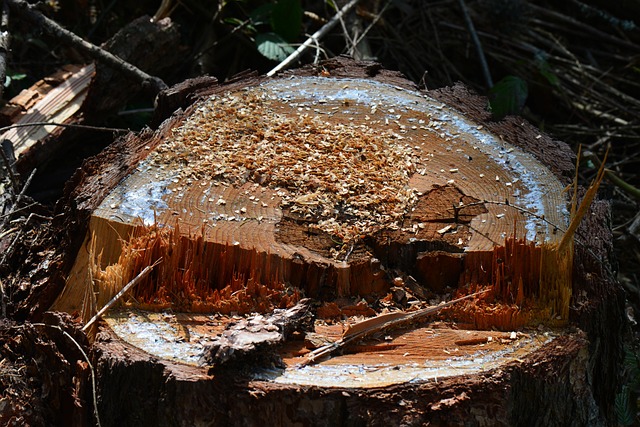
Diagnostic Methods For Accurate Assessment
Assessing the health of a diseased tree requires a thorough and methodical approach. Accurate diagnosis helps you decide whether to treat the tree or remove it entirely. Several diagnostic methods are available to evaluate tree health effectively, each offering unique insights into potential issues.
Visual Inspection Techniques
Visual inspections are the first step in understanding a tree’s condition. By observing the tree’s bark, leaves, and branches, you can identify common signs of disease. Look for discolored or wilting leaves, cracks in the bark, or fungal growth at the base.
Create a checklist to guide your assessment. Include items like weak branches, unusual growth patterns, or evidence of pest activity. Regular monitoring throughout the year is key, as seasonal changes often reveal new issues.
Documenting these observations can help track the tree’s health over time and guide future care decisions.
Soil Testing And Analysis
The health of the soil plays a critical role in a tree’s overall well-being. Conduct soil tests to measure nutrient levels, pH balance, and moisture content. Poor soil conditions, such as compaction or drainage issues, often contribute to diseases.
Start with a basic soil analysis kit to identify deficiencies, and consult a professional if more detailed results are needed. Consider these factors during assessments: nutrient availability, fungal presence in the soil, and signs of root rot.
Healthy soil supports strong root systems, making trees more resilient to pathogens.
Laboratory Disease Identification
In some complicated cases, laboratory testing is the only way to get a definitive answer. First, we need professionals—preferably certified arborists—collecting the correct tissue samples and sending them to labs qualified to identify the disease.
This diagnostic method is particularly effective for diagnosing infections from the forty known pathogenic genera currently infecting humans in the U.S. While lab results provide highly specific information, these details empower you to create more targeted treatment plans or determine the need for removal with absolute certainty.
Situations requiring lab tests include unknown leaf discoloration, persistent wilting, and repeated infections despite treatment.
Professional Arborist Assistance
Professional arborist assistance: Certified arborists have the knowledge and expertise to carefully examine a tree’s health, determine any existing risks, and recommend the best course of action. Their extensive background guarantees that every decision is thoughtful, realistic, and in the best interest of your property’s long-term health.
When To Seek Expert Advice
Certain scenarios indicate the need for professional arborist assistance. For instance, if a tree shows structural instability, extensive decay, or pest infestation, expert evaluation is vital. Arborists are essential in complex cases where multiple trees or environmental factors are involved.
Their assessments provide clarity and prevent missteps in care or removal.
Signs for consultation:
- Fungal growth, such as mushrooms, at the tree base
- Over 50% of thtreeswere ee damaged
- Visible pest infestations or unusual leaf discoloration
- Leaning trees or large dead branches
What Arborists Can Assess
Professional arborists conduct tree evaluations to inform appropriate action. Considered consultants as well as caretakers, they look at structural integrity, disease progression, and soil conditions while providing specific recommendations.
For example, they would recommend pruning to improve airflow or stump removal to prevent the forming of fungus or pests.
Specific assessments include:
- Soil nutrient testing
- Root health evaluations
- Disease identification
- Risk analysis for falling limbs
Long-Term Tree Health Strategies
Professional arborists can assist in the creation of proactive care plans. Trees subjected to consistent and proper pruning and fertilization, as well as close monitoring, can increase resilience in trees.
For trees that become diseased, the removal of soft stumps enables the possibility of replanting, creating long-term environmental and aesthetic benefits.
Strategies include:
- Routine inspections and pruning
- Installing root barriers to control growth
- Tree fertilization for nutrient delivery
Preventing Future Tree Problems
Taking care of your trees is the best way to prevent disease and ensure trees stay healthy for the long term. Set high standards and select appropriate tree species. When you focus on soil quality, you reduce future problems and ensure a robust and vibrant landscape.
Proper Tree Care Practices
Healthy trees don’t just happen, they take time and effort to maintain. Routine pruning to clear out dying or brittle branches allows for better airflow, cutting down on the chances of disease while bolstering tree strength.
For example, early pruning of infected limbs can help to prevent the spread of disease. A tree that has less than a quarter of its branches damaged typically recovers. If 50% or more of the branches are involved, removal is the best option.
Watering deeply and regularly helps roots get the moisture they need, and applying mulch conserves soil moisture and moderates soil temperature.
Key practices include:
- Prune annually to promote growth and prevent infections.
- Watering deeply during dry periods.
- Provide 2–4 inches of mulch at the base, keeping it off the trunk.
- Inspecting trees regularly for pests like borers or aphids.
Choosing Disease-Resistant Species
Choosing species that are resistant to diseases makes it easier to care for trees in the long run. Native tree species, such as oak or dogwood in the United States, better withstand the native environment, promoting biodiversity and ecosystem resilience.
They need much less intervention to remain vibrant and healthy.
Recommended species:
- Eastern Redbud
- American Elm (disease-resistant hybrids)
- Southern Magnolia
Maintaining Soil Health
Healthy soil goes a long way to keeping trees healthy. Composting brings in many nutrients, and mulching helps improve any soil erosion that might occur.
When done properly, aeration allows roots better access to water and nutrients.
Soil tips:
- Test pH levels annually.
- Add organic compost to enrich nutrients.
- Avoid compacting soil around roots.
Conclusion
Choosing between treating vs removing a diseased tree depends on knowing the tree’s health and risk factors. A healthy yard starts with careful decision-making that considers safety, cost, and long-term impacts. If the disease is treatable, intervention will allow you to save a beautiful tree. At times, removal is the safest option to protect your property and the surrounding greenery.
What’s important is taking action as early as possible. When in doubt, seek advice from a certified arborist to help you make the right decision. With their deep experience, they guarantee the most precise diagnostics and personalized solutions. Continue to be proactive with proper care and prevention. In short, making these decisions now will help mitigate future risks and set your trees up for long-term success.
To neglect them means you’re ignoring an important investment, so treat your trees with care. The bottom line: Healthy trees help ensure a healthy, beautiful yard.
Frequently Asked Questions
1. How Can I Tell If A Tree Is Diseased?
Look for signs such as yellowing or dead leaves, vertical cracks in the trunk, rotting bark, or fungal growth. Only a professional arborist will be able to give you a complete, accurate diagnosis.
2. Can A Diseased Tree Be Saved?
Short answer yes, if the disease is treatable and caught in time. Pruning, fertilizing, and pest management may be able to restore the tree’s health. Consult an arborist to get the best advice.
3. When Should I Remove A Diseased Tree?
Remove a tree if it poses an imminent safety risk, has extensive decay present, or treatment has a low potential for success. Decomposing trees is even more dangerous.
4. What Are The Risks Of Leaving A Diseased Tree Untreated?
Untreated trees continue to spread disease and attract pests. With weak branches, or worse yet, a tree’s entire structure compromised, it can easily become a safety hazard.
5. How Do I Decide Between Treating And Removing A Tree?
Consider the overall health of the tree, how advanced the disease is, and the financial implications of each option. Hiring a certified arborist is the surest way to make an informed decision.
6. What Does A Professional Arborist Do?
Their services include diagnosing tree health, recommending treatments, or removing dangerous trees in a safe manner. Certified arborists have the know-how and the right equipment to do the job.
7. How Can I Prevent Tree Diseases In The Future?
Through inspections, pruning and fertilizing, trees can be HD healthy trees. Don’t overwater trees, and keep an eye out for pests or other sudden changes. Whatever the case, early intervention will always be critical!
Protect Your Landscape With JC Tree Service’s Expert Tree Disease Solutions
If tree disease is threatening the health and beauty of your property, JC Tree Service is here to help. Whether you’ve noticed discolored leaves, brittle branches, or unusual growths, our expert team can diagnose and treat a variety of tree diseases. From targeted treatments to full tree removal when necessary, we provide comprehensive tree care solutions in Brentwood, Antioch, and surrounding areas.
Tree disease can spread quickly, weakening your trees and posing risks to your landscape. Early intervention is key to preventing further damage. At JC Tree Service, we tailor our treatments to the specific needs of your trees, helping to restore their health and vitality. Our expert care not only preserves the natural beauty of your property but also prevents potential hazards like falling limbs and decay-related structural issues.
Don’t let tree disease compromise the safety and aesthetics of your outdoor space. Contact JC Tree Service today for professional diagnosis and treatment. We offer a free, no-obligation quote to help you get started. Let us protect and preserve the trees that make your landscape thrive!
Disclaimer
The materials available on this website are for informational and entertainment purposes only and not to provide legal or professional advice. You should contact your attorney or home improvement specialist to obtain advice concerning any particular issue or problem. You should not act or refrain from acting based on any content included in this site without seeking legal or other professional advice. The information presented on this website may not reflect the most current home improvement developments. No action should be taken in reliance on the information on this website. We disclaim all liability concerning actions taken or not taken based on any or all of the contents of this site to the fullest extent permitted by law.
